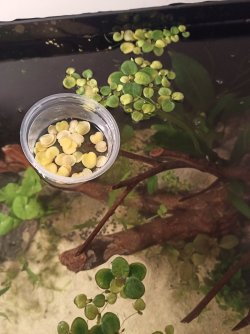TwoTankAmin
Fish Maniac
I have used Excel for about 20 years. I also did one high tech planted tank with pressurized CO2 and that tank did not get Excel as there was no need. It is important to know that there are some plant species which do not do well with Excel. So if you want to use it, you need to avoid those plants. I also only add the Excel once a week after water a change. I have never dosed it daily.
I have heard the arguments against using Excel. The problem is that my experience using it tells me those arguments lack any merit. I have very healthy fish living long lives in tanks where I have dosed Excel regularly. But let's use a bit of common sense here. If eexcel were harmful for fish or inverts when used as directed, would there not be numerous reports all over the internet about the nyriad fish it has killed and tanks it has trashed? I cannot find them.
Also, Tom Barr a known plant expert seems OK with Excel. While he prefers not using it in large tanks, Ihave used it in my 150 gal clown loach tank since I moved the fish into it from a 75, which also got Excel. Finally, Have a read of this thread in its entirety
https://www.ukaps.org/forum/threads/flourish-excel-yes-or-no.29085/
My first bottle of plant ferts was SeaChem. I never finished it because I switched to Tropica ferts which I am still using some 22 years later. Over the years the changed the branding etc. Tropica is one of the oldest suppliers of plants to the hobby. The info on their site is excellent.
https://tropica.com/en/
I have heard the arguments against using Excel. The problem is that my experience using it tells me those arguments lack any merit. I have very healthy fish living long lives in tanks where I have dosed Excel regularly. But let's use a bit of common sense here. If eexcel were harmful for fish or inverts when used as directed, would there not be numerous reports all over the internet about the nyriad fish it has killed and tanks it has trashed? I cannot find them.
Also, Tom Barr a known plant expert seems OK with Excel. While he prefers not using it in large tanks, Ihave used it in my 150 gal clown loach tank since I moved the fish into it from a 75, which also got Excel. Finally, Have a read of this thread in its entirety
https://www.ukaps.org/forum/threads/flourish-excel-yes-or-no.29085/
My first bottle of plant ferts was SeaChem. I never finished it because I switched to Tropica ferts which I am still using some 22 years later. Over the years the changed the branding etc. Tropica is one of the oldest suppliers of plants to the hobby. The info on their site is excellent.
https://tropica.com/en/


